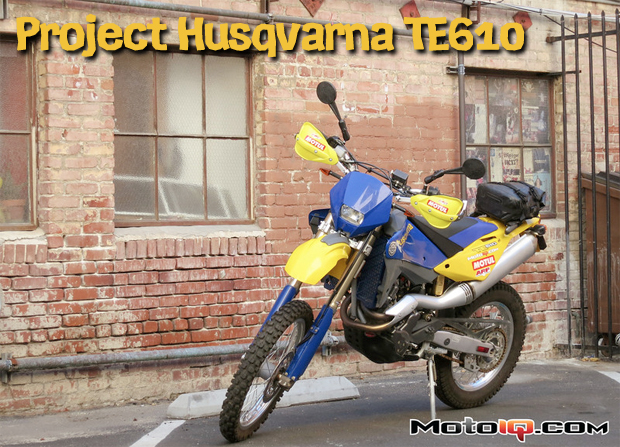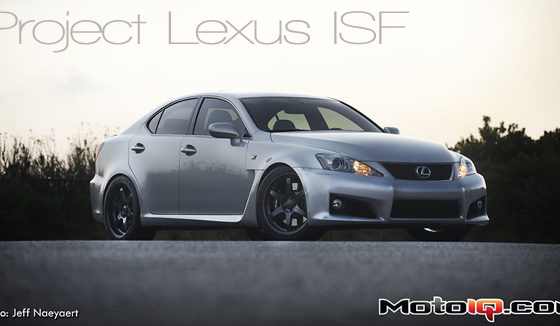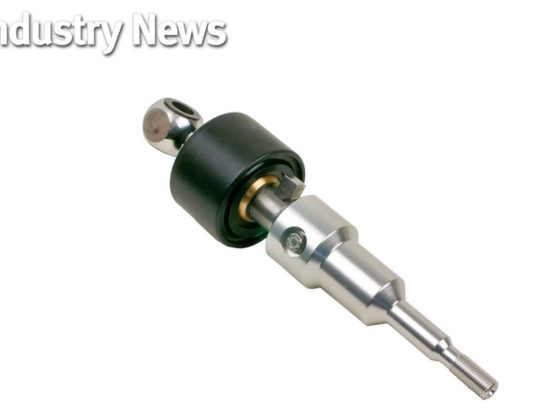
Project Husqvarna TE610 Part 5: Dual Sport Adventure Bike Day Trips
By Dan Barnes
Our Husqvarna TE610 has been getting more miles on it, and has received a little love to make day trips safer, more comfortable and more convenient.
The TE610 experienced its first actual failure when the battery checked out. Back in Part 1, I wrote, “Gravity is a very reliable and inexpensive fuel pump, and a carbed TE610 can be bump started with a totally failed battery.” After sitting for months at a time and always firing up with no problems, the battery stopped working without warning. I had ridden the bike about a week earlier, but on the morning of a big, organized dual-sport ride, it had nothing. It was so dead that the onboard computer freaked out and refused to log mileage or respond to any inputs that day.
I jump started it and the battery took a charge in the first hour, starting the bike the rest of the day. The following weekend was worse, and I got practice bump-starting the Husky under all sorts of conditions. Then I ran it out of gas. The fuel line and gloves in my back pack plus a water bottle and a topped up tank on my buddy's ride got me back to the van with 0.1 gallon left. The point being, I'm not sure how I'd have recovered from both a bricked battery and a dry tank on an injected bike, but the Keihin-equipped TE610 proved resilient against this idiot and got him home.
I had already been thinking about a lighter, smaller battery, so I accelerated my research. The summary of what I learned is this: There is no 100 percent bomb-proof battery solution.
LiFePO batteries are getting better and better, but are still very expensive and vulnerable to being taken out by the failure modes of other electrical components on the bike.
Every lead-acid battery manufacturer has reports of failures, no matter how good its reputation. In every thread of people saying they use Brand X in all their bikes, someone will come along with a story of how Brand X batteries screwed them one or more times and they'll never use Brand X again. An off-road bike is a harsh environment.
Don't bother with a lead-acid battery in a motorcycle that's not absorbed glass mat technology. AGM batteries are inherently leak-resistant and tolerant of being tipped on their side. The better ones prove durable electrically, often able to be reconditioned from severe discharge or over charging and go on to provide years of good service.
 |
| The battery that was in the bike weighs 10 lb, 10.2 oz. The Yuasa YTZ14S weighs 8 lb, 7.8 oz with the aluminum and foam, for a reduction of 2 lb, 2.4 oz. The foam should absorb vibration and shocks, helping the battery last longer. |
Yuasa's standard line of AGM motorcycle batteries has a quality reputation but requires the dealer or user to fill it with acid and then charge it before use. It is “sealed”, but only against brief tip-overs and to eliminate the need for periodic topping-up of the electrolyte. The user is cautioned against installing it in any position other than upright. I stepped up to the truly sealed YTZ14S battery, which is shipped filled and charged and can be installed in any position. The YTZ14S is smaller than a standard battery (same foot print but shorter in height), while delivering more cold cranking amps. It is original equipment on motorcycles up to 1700cc, so should be more than enough to crank the Husky's 576cc any time, anywhere. It is available at a price a little below anything comparable sold under a racing or high-performance banner.
The details of the Husky's battery box make life easiest if the top of the battery is in the stock position. Several layers of inexpensive workshop floor padding fill the extra space. A bent section of 0.040-in thick aluminum controls movement of the padding and bottom of the battery on the forward side. With a healthy battery installed, the Husky's onboard computer started functioning normally again.
 |
| If I ever need a place to hide a stack of dirty Benjamins when I ride to Florida, that middle layer looks like a good option. |
Guts Racing Tall Seat
My mountain bike seat is comfortable for hours at a time. It is a lot narrower than the TE610's stock seat and much harder. The seat for my YZ250 is also narrower on top, as well as firmer with squarer edges, and I have no complaints. The TE610's stock seat always began to be uncomfortable in less than half an hour, and on a ride much over an hour could become painful. Most people compare it to sitting on a 2×4. But with the other bikes to compare it to, I wasn't convinced that the fundamental problem was that the TE610's seat overall was too narrow or too hard. The devil's poker is in the details.



